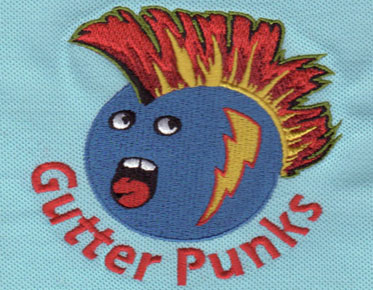Why Is It Thread Break in Embroidery Digitizing?
Well, it helps if you know how it works first! Nobody likes to deal with a thread break, and the embroidery thread itself is often unjustly accused. Sure, there are a few cheap and ugly lines available, but there are a lot of great brands, such as Hemingworth, which, of course, have the advantage of an exclusive reel and cap system. he following content also has some reference value for Eagledigitizing.
So why is it thread break?
The process of forming stitches is quite complicated. The fact that a sewing machine can make one stitch, many things have to work in perfect harmony, and every stitch is a success, is a miracle. I think it's easier to figure out why the thread is breaking if you understand how the stitches are formed in the first place.
Sewing or embroidery machines form
so-called lock stitches, consisting of upper and lower thread axes that lock
them together during the sewing process. The needle thread is delivered as a
continuous thread, while the thread axis is wound on a smaller spool. People
often ask why it can't be two continuous threads, but the truth is that to form
a lock stitch, one thread must be completely wrapped by the other, hence the
need for a spool.
So let's follow the formation of the lock pin. Imagine the needle is threaded, in the up position, and the take-up rod is also in the up position. The spool is loaded and there is fabric underfoot.
1. The needle begins to move down, piercing the fabric on the way. At the same time, the take-up bar also begins to descend, creating slack in the needle thread to help form the stitch.
2. The needle continues downward until it reaches the very bottom of its travel. As it begins to rise, the slack needle thread begins to form a small loop under the needle plate behind the eye of the needle. The kneading effect of the fabric and the structure around the eye of the needle help with this step.
3. When the loop of thread forms a swivel hook (sometimes called a shuttle point) that meets the back of the needle, just above the eye of the needle, at a point called the needle scarf. If the hook point does not enter the threaded loop, stitch loss or slippage can occur. Stitches that are missed multiple times in a row often result in tangents.
4. After entering and grasping the thread, the hook (or shuttle) continues its rotational motion. It then wraps the still slack needle thread around the spool, which is loaded into the spool case (holder) and completely wraps the spool of thread.
5. About halfway through the rotation, the hook/shuttle will release the slack thread and the thread take-up lever will rise from its lowest point. It will start to take up the slack thread needed to wrap the wire axis.
6. The take-up rod will continue up, removing slack threads. At this point, by applying enough tension to the threads, the thread tensioner comes into play. This allows the take-up lever to pull the thread and hold the stitch securely to the fabric without pulling excess needle thread from the spool.
This entire complex process is repeated for each stitch. You might be surprised by the length of thread required to produce a single 2mm long stitch. This will quickly go through the eye of the needle, about 45 times, and sew into the fabric. As you can imagine, creating stitches is a complicated process, and there's a lot of stress on the thread. Everything has to be perfectly synchronized, if not, the threads will break or shred. Let's take a look at a list of things you can remedy on your own if you experience thread breakage issues:
Typical causes of thread breaks or shredding
Needle
too small - means smaller eye and causes thread
stress. Remember how many times the thread goes through the needle. Choose the
correct size needle for the thread you are using.
Wrong
needle type - Embroidery needles have slightly
larger eyes than most needle types to form loops better and hold thread more
efficiently without relying on larger needle diameters.
Damaged
or worn needle eyes - Needles do wear out,
especially when using metal or abrasive threads. This will put pressure on the
thread.
Damaged
pinhole in the needle plate - this can be abrasive
on the threads, usually the result of a broken needle. Damaged plates can often
be ground and polished by a technician. If you do it yourself, don't make the
pinhole too big.
Damaged
bobbin case or shuttle hook - jam the threads.
Again often caused by broken needles or incorrectly inserted spool boxes.
Usually, this requires a new spool box, so always have a second or spare spool
box on hand.
Incorrect
thread or blocked thread path - a very common user
error, especially not being able to ensure the thread is properly seated in the
take-up rod.
Too
Tight Tension - Stresses the threads, usually
caused by a single thread spool or color being pulled too tightly. Some color
dyes do affect tension. You can lower the needle tension.
Too
loose tension - excess thread is created, which can
cause the loop to collapse or not form properly, resulting in lost stitches.
Tighten the needle tension.
The
thread may have dried out - most good threads are
lubricated with silicone during production. This can dry out and cause tangents
and/or tension. Just spray the thread with pure silicone spray and let it sit
for an hour (or overnight). This usually brings the mains back to life.
Fabric
Marks - Usually caused by incorrect or no backing,
incorrect presser foot height, poor hoop, hoop vibration, dense design or
damaged needles. This is the most common cause of thread crushing.



